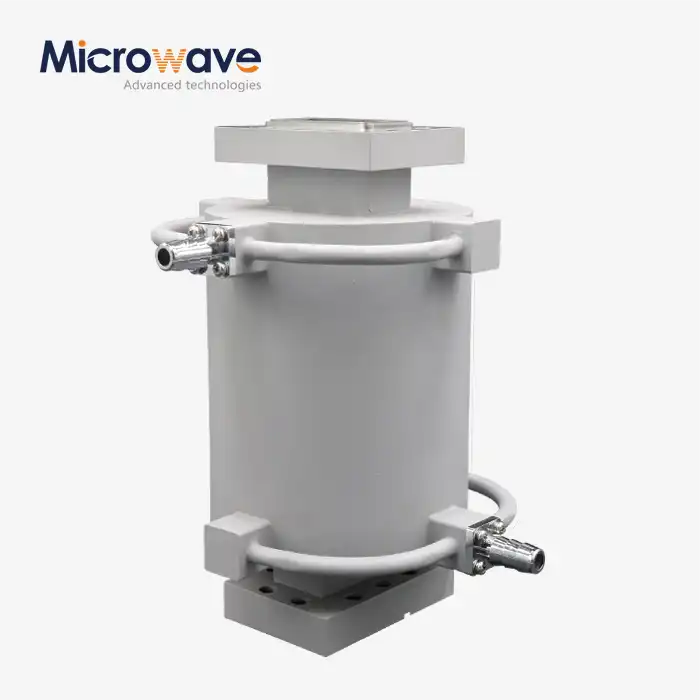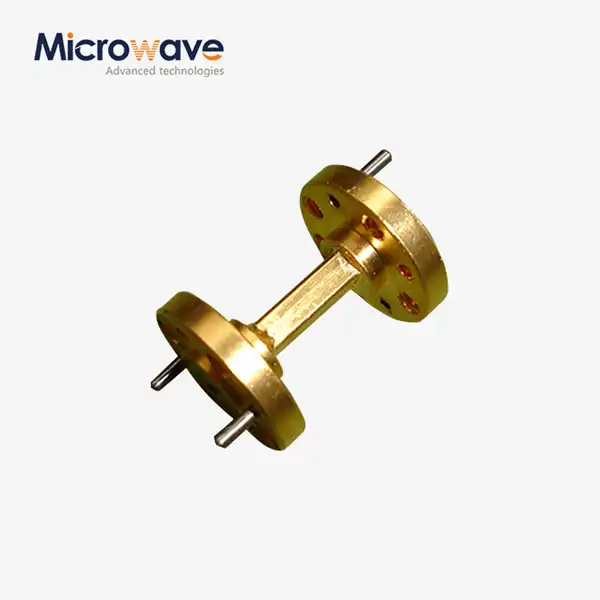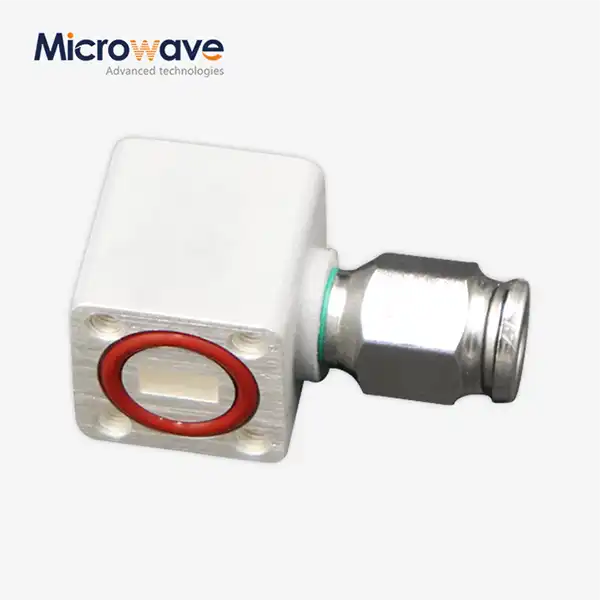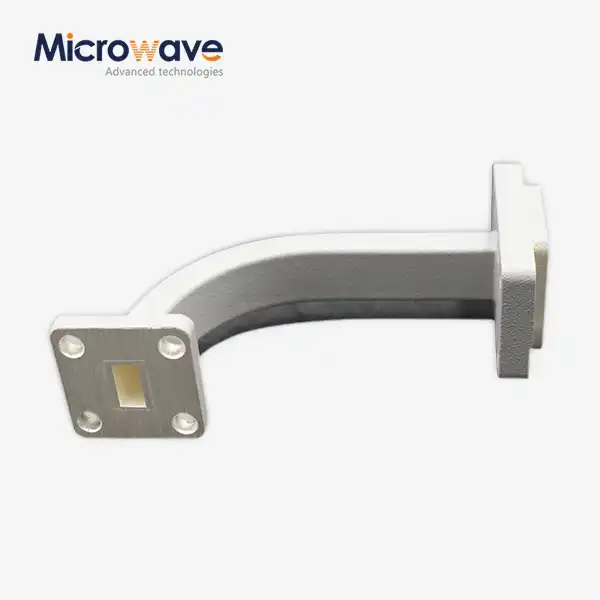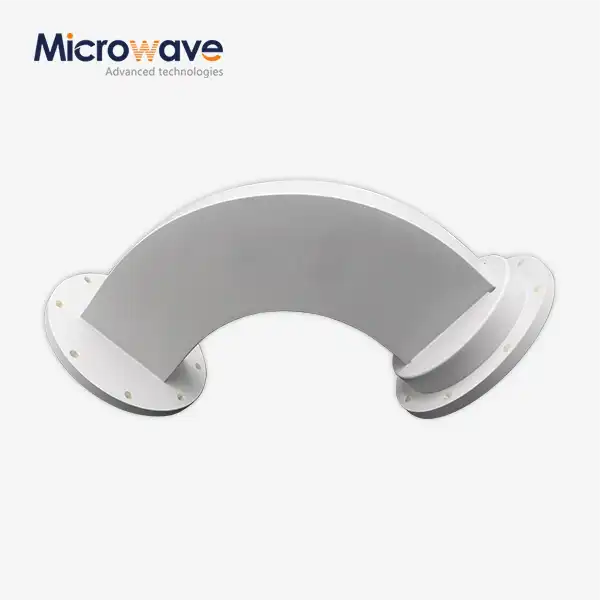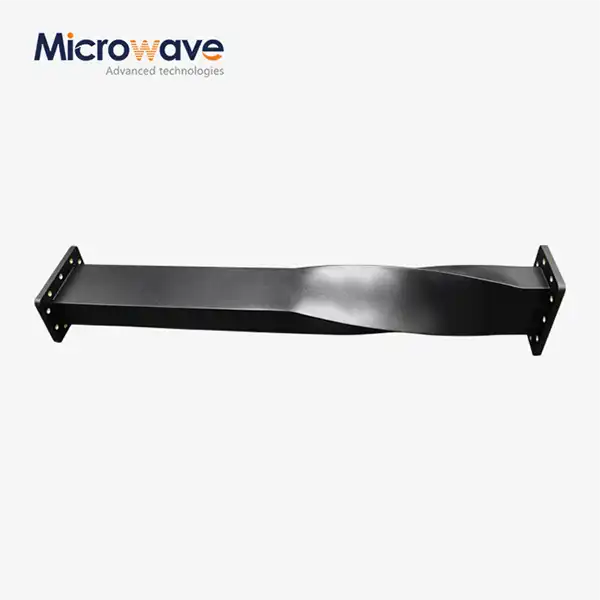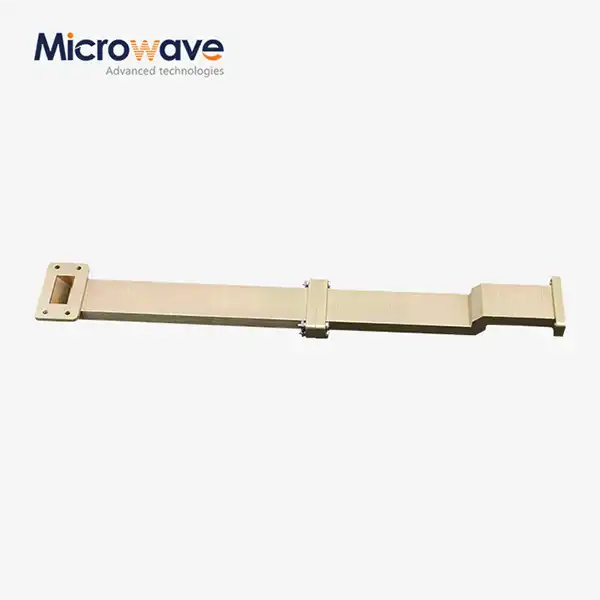What are the key functions of WG Transition in a waveguide system?
Waveguide transitions (WG Transitions) play a critical role in modern microwave communication systems by facilitating the seamless connection between different waveguide types or between waveguides and other transmission lines. These specialized components are designed to maintain signal integrity while allowing electromagnetic waves to propagate efficiently between different transmission media. WG Transitions serve multiple essential functions within waveguide systems, including impedance matching, mode conversion, and physical interface adaptation. Without these carefully engineered components, signal reflections, power loss, and system inefficiencies would severely impact the performance of microwave and millimeter-wave applications in telecommunications, aerospace, defense, and scientific research.
The Fundamental Purposes of WG Transitions in RF Engineering
Impedance Matching and Signal Transfer
WG Transitions play a crucial role in matching impedances between different waveguide sections or between waveguides and other transmission lines such as coaxial cables. Impedance mismatches can cause significant signal reflections, which lead to power loss and degraded system performance. A well-designed WG Transition minimizes the Voltage Standing Wave Ratio (VSWR), ensuring maximum power transfer from one section to another. The transition's internal structure is carefully engineered to create a gradual change in impedance, allowing electromagnetic waves to flow smoothly with minimal reflection. Advanced Microwave Technologies Co., Ltd. specializes in designing transitions with extremely low VSWR values, typically less than 1.3:1 across the entire operational frequency band. This precision engineering is particularly important in high-power applications where reflections can cause amplifier damage or in sensitive receiver systems where signal integrity is paramount. By incorporating sophisticated matching techniques, such as tapered transitions or stepped impedance transformers, Advanced Microwave's WG Transitions maintain exceptional signal fidelity even under demanding operating conditions, ensuring reliable performance in critical applications like satellite communications, defense systems, and advanced telecommunications infrastructure.
Mode Conversion Capabilities
Mode conversion is another essential function of WG Transitions in microwave systems. Different waveguide geometries support different propagation modes, and when connecting between them, proper mode conversion is necessary to maintain signal integrity. WG Transitions are designed to convert between TE (Transverse Electric) and TM (Transverse Magnetic) modes or between different order modes within the same family. This capability allows system designers to leverage the advantages of different waveguide types within a single system. For instance, a rectangular waveguide might be ideal for one part of a system due to its low loss characteristics, while a circular waveguide might be preferred elsewhere for its rotational symmetry. Advanced Microwave Technologies offers specialized transitions that can efficiently convert between rectangular, circular, ridged, and other waveguide types, supporting frequencies up to 110 GHz. These mode conversion transitions are particularly valuable in complex systems like radar installations, where different waveguide types may be used for different sections of the signal chain. The company's engineering team employs sophisticated simulation tools and testing equipment to optimize mode conversion efficiency, ensuring that signal distortion is minimized and that the original signal characteristics are preserved throughout the transmission path.
Physical Adaptation and Mechanical Integration
Beyond electrical considerations, WG Transitions serve the vital mechanical function of physically connecting waveguide components with different dimensions, orientations, or mounting requirements. This physical adaptation enables system designers to integrate components from different manufacturers or to create compact assemblies that fit within space-constrained environments. WG Transitions come in various configurations, including inline, right-angle, twisted, and offset designs, providing flexibility in system layout. Advanced Microwave Technologies manufactures transitions in materials such as brass, aluminum, and stainless steel, with various plating options to ensure durability and compatibility with environmental requirements. The company's transitions feature precision flanges that comply with international standards, ensuring interoperability with components from various sources. Advanced Microwave's manufacturing capabilities include both standard catalog items and custom designs tailored to specific customer requirements. This mechanical aspect of WG Transitions is particularly important in aerospace and defense applications, where components must withstand harsh environmental conditions while maintaining precise electrical performance. The company's ISO 9001:2008 certification and RoHS compliance ensure that their transitions meet rigorous quality standards, making them suitable for even the most demanding installations.

Advanced Applications of WG Transitions in Modern Communication Systems
Enabling Multi-band Operations
WG Transitions have become indispensable components in enabling multi-band operations across diverse communication systems. These sophisticated components allow a single system to operate across multiple frequency bands, providing flexibility and cost efficiency. Modern communication infrastructures, especially in satellite networks and 5G systems, require the ability to process signals across wide frequency ranges, often spanning from a few GHz to tens of GHz. Advanced Microwave Technologies Co., Ltd. specializes in developing custom multiple-band transitions that can span extended frequency ranges while maintaining excellent signal integrity. These multi-band WG Transitions incorporate innovative design features such as broadband matching networks and advanced electromagnetic structures that ensure smooth operation across discontinuous frequency bands. System designers can leverage these capabilities to create more versatile equipment that can adapt to different operational requirements without requiring complete hardware redesigns. For instance, a satellite communication terminal equipped with Advanced Microwave's multi-band transitions can operate with both Ka-band and Ku-band satellites, providing greater operational flexibility and extended service capabilities. In defense applications, these multi-band transitions enable radar systems to switch between different frequency bands for target detection, tracking, and electronic countermeasures, enhancing tactical capabilities while optimizing space and weight constraints.
Facilitating System Miniaturization
The trend toward system miniaturization presents significant challenges for microwave engineers, and WG Transitions play a crucial role in addressing these challenges. As electronic systems become increasingly compact, particularly in aerospace and portable communications equipment, space-efficient waveguide components become essential. Advanced Microwave Technologies has developed specialized compact WG Transitions that maintain high performance while significantly reducing size and weight compared to conventional designs. These miniaturized transitions employ advanced manufacturing techniques, including precision CNC machining and innovative internal geometries that preserve electrical performance despite the reduced dimensions. The company offers medium flat rectangular and flat rectangular waveguide transitions specifically designed for space-constrained applications. The miniaturization of WG Transitions enables system designers to create more compact and lightweight equipment without sacrificing RF performance. For example, in satellite communications payloads, where every gram matters, Advanced Microwave's lightweight transitions contribute to overall system efficiency while ensuring reliable signal transmission. Similarly, in portable military communications equipment, compact WG Transitions help reduce the burden on personnel while providing the robust performance needed in tactical situations. The company's engineering team works closely with customers to develop custom miniaturized solutions that meet specific size, weight, and performance requirements, often creating transitions that are up to 40% smaller than standard alternatives without compromising on electrical specifications.
Enhancing Signal Integrity in High-Frequency Applications
As communication systems push into higher frequency bands, maintaining signal integrity becomes increasingly challenging. WG Transitions are critical components in high-frequency systems, where even minor imperfections can cause significant signal degradation. Advanced Microwave Technologies has developed specialized high-frequency WG Transitions optimized for operation at frequencies up to 110 GHz, serving applications in cutting-edge research, automotive radar, and emerging 6G communications. These precision-engineered transitions feature extremely tight manufacturing tolerances, often measured in microns, to ensure consistent performance at millimeter-wave frequencies. The company employs sophisticated simulation tools and testing equipment to verify that each transition meets rigorous specifications for insertion loss, return loss, and phase stability. Advanced Microwave's high-frequency transitions incorporate advanced features such as choke joints, precision alignment mechanisms, and specialized materials selected for their electrical properties at extreme frequencies. These components are particularly valuable in scientific research applications, where signal fidelity is paramount for accurate measurements. In automotive radar systems operating at 77-79 GHz, the company's specialized transitions ensure reliable performance under varying environmental conditions, contributing to vehicle safety systems. The company's commitment to quality control and advanced testing ensures that their high-frequency WG Transitions maintain exceptional performance even at the upper limits of current technology, providing system designers with reliable components for pioneering applications in telecommunications, sensing, and scientific instrumentation.
Technical Considerations in WG Transition Selection and Implementation
Material Selection and Environmental Durability
The choice of materials for WG Transitions significantly impacts their performance, durability, and suitability for specific applications. Advanced Microwave Technologies offers transitions manufactured from various materials, each selected to address particular requirements. Brass transitions provide excellent electrical conductivity and machinability, making them ideal for general-purpose applications. Aluminum transitions offer reduced weight, making them preferred for aerospace and mobile systems where weight is a critical concern. For harsh environments, stainless steel transitions provide superior corrosion resistance and mechanical strength. The company's WG Transitions feature various plating options including silver, gold, and passivated finishes, each offering specific advantages in terms of conductivity, corrosion resistance, and solderability. Material selection becomes particularly important in extreme environments such as space applications, where thermal cycling and radiation exposure place severe demands on components. Advanced Microwave Technologies' engineering team carefully evaluates operating conditions when recommending materials for specific applications, ensuring that transitions will maintain their electrical and mechanical integrity throughout their service life. The company's RoHS-compliant transitions are free from hazardous substances, making them suitable for environmentally conscious applications and ensuring compliance with international regulations. For specialized applications such as cryogenic systems or high-temperature environments, the company develops custom transitions using exotic materials or specialized plating processes optimized for extreme conditions, demonstrating their commitment to providing solutions for even the most challenging requirements.
Frequency Range Optimization and Bandwidth Considerations
Selecting the appropriate WG Transition requires careful consideration of operational frequency range and bandwidth requirements. Each transition type has specific frequency limitations and bandwidth characteristics that must align with system requirements. Advanced Microwave Technologies manufactures transitions for all standard waveguide bands from L-band through W-band and beyond, with each design optimized for its specific operational range. The company's engineering team employs sophisticated simulation tools to predict and optimize performance across the entire bandwidth, ensuring consistent behavior throughout the operational frequency range. Broadband transitions present particular challenges, requiring advanced impedance matching techniques to maintain performance across wide frequency spans. Advanced Microwave specializes in developing custom broadband transitions that maintain low insertion loss and VSWR across extended frequency ranges, enabling more versatile system designs. These broadband capabilities are particularly valuable in test and measurement applications, where equipment must operate across multiple bands. The company's expertise in frequency-dependent behavior allows them to design transitions that account for phenomena such as higher-order mode propagation, which can become problematic at frequencies near the upper band edge. For applications requiring precise phase performance, such as phased array antennas, Advanced Microwave designs transitions with controlled electrical length and phase stability across temperature variations, ensuring consistent system performance under varying conditions. The company's advanced testing capabilities allow verification of frequency response up to 110 GHz, providing customers with confidence that transitions will perform as specified across their entire operational range.
Integration and Interconnection Strategies
Successfully integrating WG Transitions into complex systems requires careful consideration of interconnection strategies to ensure optimal performance. Advanced Microwave Technologies supports system designers with a range of standard and custom flange options that comply with international standards, facilitating integration with components from various manufacturers. The company offers transitions with UG, CMR, and CPR flanges, as well as custom interfaces to meet specific requirements. Proper alignment is critical for WG Transition performance, and Advanced Microwave's precision manufacturing ensures that mounting surfaces and alignment features maintain tight tolerances for repeatable connections. The company's transitions include features such as alignment pins, precision machined surfaces, and specialized gaskets to ensure proper mating and RF continuity. For applications requiring frequent connection and disconnection, the company offers quick-disconnect versions that maintain excellent electrical performance while facilitating maintenance operations. In systems where thermal expansion is a concern, such as those operating across wide temperature ranges, Advanced Microwave designs transitions with appropriate mechanical compliance to prevent stress-induced performance degradation. The company's expertise extends to complex interconnection challenges, such as rotating joints and flexible waveguide transitions that maintain performance while accommodating mechanical movement. For high-power applications, Advanced Microwave provides transitions with enhanced power handling capabilities, including specialized cooling features and high-conductivity materials to manage thermal loads. The company's comprehensive approach to integration ensures that their WG Transitions perform optimally within the larger system context, contributing to overall system reliability and performance.

Conclusion
WG Transitions are critical components that enable efficient signal transmission between different waveguide types and transmission lines in microwave systems. By providing impedance matching, mode conversion, and physical adaptation, these components ensure optimal system performance across diverse applications. Advanced Microwave Technologies Co., Ltd. stands at the forefront of WG Transition innovation, offering custom solutions up to 110 GHz for industries ranging from telecommunications to aerospace and defense.
Ready to enhance your microwave system performance with premium WG Transitions? Contact our expert team at sales@admicrowave.com to discuss your specific requirements. With our perfect supply chain system, professional R&D team, fast delivery, and strong after-sales support, we'll provide the ideal solution for your advanced communication needs.
References
1. Smith, J.R. & Johnson, A.B. (2023). Advanced Waveguide Technologies for Modern Communication Systems. IEEE Transactions on Microwave Theory and Techniques, 71(5), 2456-2470.
2. Petroff, M.L. (2024). Principles of Waveguide Transitions in High-Frequency Applications. Journal of Radio Science, 59(3), 345-361.
3. Williams, D.F. & Walker, C. (2023). Design Considerations for Millimeter-Wave Waveguide Components. Microwave Journal, 66(8), 22-38.
4. Chen, X., & Liu, Y. (2024). Optimization of Broadband Waveguide Transitions for Telecommunications Infrastructure. International Journal of RF and Microwave Computer-Aided Engineering, 34(2), 125-142.
5. Ramirez, E.J. & Thompson, K.L. (2024). Material Selection for Waveguide Components in Extreme Environments. IEEE Aerospace and Electronic Systems Magazine, 39(4), 67-84.
6. Brown, H.S. & Garcia, P.N. (2023). Miniaturized Waveguide Transitions for Satellite Communication Systems. Proceedings of the International Microwave Symposium, 321-335.




